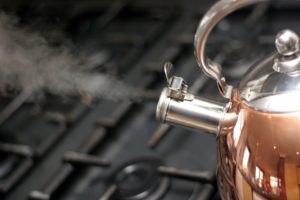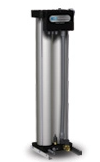
Whether it’s your kettles, boilers, steamers, dishwashers, or ice machines, most of the kitchen appliances need water to work, but the minerals and other contaminants in the water supply can deteriorate their efficiency and performance, causing frequent equipment failure. If you’re a tea drinker you may already know how frustrating pesky limescale buildups can be when you take out your favorite kettle to make some tea.
What Causes Limescale in Kettles?
Limescale in kettles typically occurs in areas with hard water in the water supply. Hard water leaves an unpleasant residue on your sinks, faucets, and kettles. The chalky residue at the bottom of your kettle develops over time as a consequence of the hot water evaporation from the kettle which leaves behind the dissolved minerals. You may think that boiling water can help keep the kettle clean but it’s certainly not a good idea for your kettle if you’re using hard water.
What is Hard Water?
Water hardness is defined as the concentration of divalent metal cations (i.e.Ca++ and Mg++) in water. According to the U.S. Department of Interior and the Water Quality Association, water hardness primarily depends on its calcium carbonate concentration. The water running through residential properties and commercial buildings features different levels of hardness. If the concentration of calcium carbonate is more than 180 mg/L it’s considered very hard. Similarly, 121–180 mg is considered hard, while 61–120 mg/L means the water is moderately hard. Contrary to popular belief, drinking hard water is quite safe, and in some cases, it may even positively affect your health. But the risks associated with drinking this water override its benefits. In addition to the clogging of plumbing pipes, hard water can also cause potential damage to your home appliances.
How to Remove Limescale from Your Kettle
While hard water may not cast any potential negative impact on your health, it can certainly affect its appearance and taste. To remove limescale, try creating an acidic solution and leave it in your kettle for some time. Some DIY acidic solutions are;
Vinegar mixture
Combine equal parts of vinegar and water in your water and leave the mixture in your kettle overnight. When you clean it in the morning the limescale will come off seamlessly.
Lemon-based solution
Combine water and the juice of one lemon and put the mixture in your kettle. Boil it for 20–25 minutes and allow it to soak for an hour. You can now dump the mixture and clean the kettle like your routine. While these methods are effective, they’re certainly not a long-term solution. You need to prevent the build-up in the first place to keep your kettles and other household appliances in good shape for a longer duration. That is, however, only possible if your install a premium quality water softening system at your home.
Looking for a Reliable Water Softening System in CA?

A water softening system softens the water through the ion exchange process replacing calcium and magnesium ions with sodium. If you’re concerned about the negative effects of sodium on your kitchen appliances, installing an adequate scale-reduction system can be a suitable option for you. At AAA Water Systems, we offer top-notch Water Treatment Solutions for homes and commercial facilities in California. Whether you want to install a new water treatment system, replace an old one, or just need to repair it, we provide the best-in-class Residential Water Filtration Services and softening services. Contact our representatives to discuss your concerns regarding the water system at your home in California.


